When it comes to podcasting, the microphone you choose is not just a tool; it’s your partner in storytelling. Every podcaster’s journey is unique filled with distinct voices, stories, and audiences. In this landscape, the Rode PodMic and Shure MV7 stand out as two popular choices, each with its own set of strengths and quirks.
This article isn’t just about specs and features; it’s about understanding how these microphones fit into the real-life scenarios of podcasting. Whether you’re recording in a professional studio or a makeshift closet space, even if you’re a seasoned podcaster or just starting out, the choice between these two microphones can significantly shape your podcast’s audio quality and, by extension, your audience’s experience.
Let’s dive into the details and nuances of the Rode PodMic vs Shure MV7, helping you make an informed decision that resonates with your podcasting aspirations.
Related: Best Microphones For Recording in Podcasting
Contents
Rode Podmic Vs Shure MV7: Design And Build Quality
In the realm of podcasting, the design and build quality of a microphone are more than just aesthetic considerations; they are crucial to the microphone’s performance and longevity. Both the Rode PodMic and Shure MV7 have been crafted with these factors in mind, offering podcasters reliable, durable, and visually appealing options.
Rode Podmic
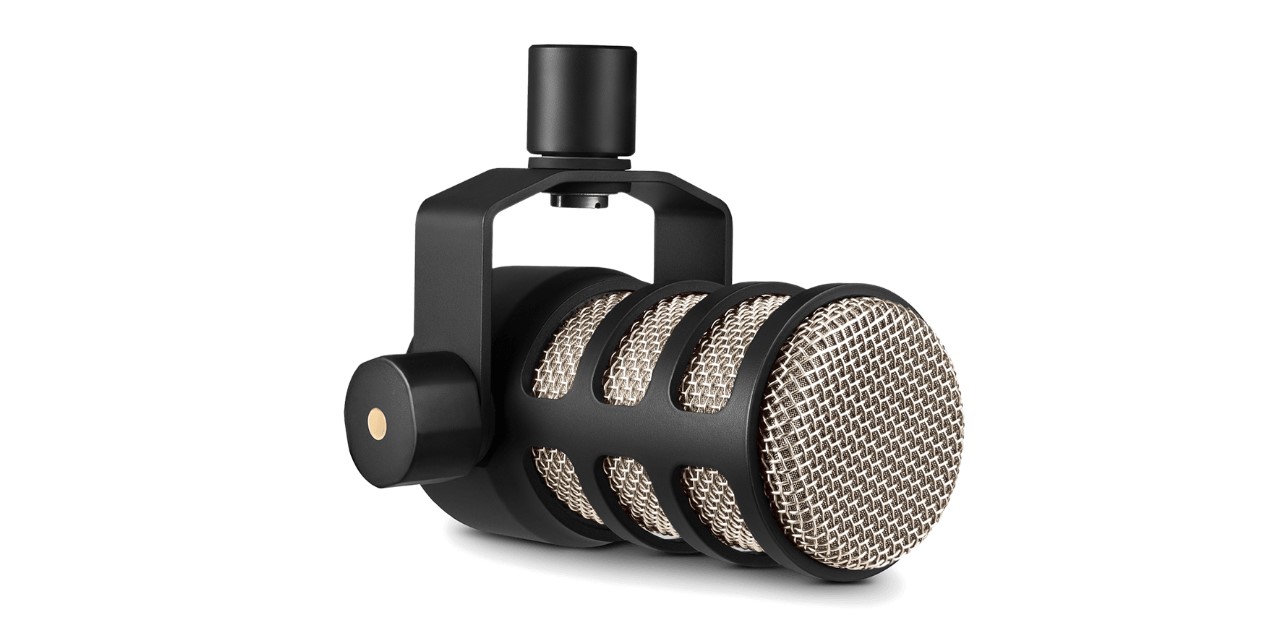
The PodMic is a broadcast-quality dynamic microphone optimised for incredible performance in podcasting. Image Source.
The Rode PodMic is a dynamic broadcast microphone, specifically optimized for podcasting, streaming, and other voice applications. Its design and build quality are tailored to meet the demands of podcasters who require a robust and reliable audio solution.
Physical Build and Materials
The Rode PodMic is a testament to durability and quality craftsmanship. Constructed primarily from heavy-duty metal, it feels substantial in hand, assuring users of its longevity. The microphone’s body is encased in a solid metal chassis, providing a sturdy foundation that reduces the risk of damage from accidental drops or bumps.
This robust construction is not just about durability; it also plays a crucial role in the microphone’s sound performance. The metal build aids in minimizing vibrations and handling noise, ensuring that the audio captured is as clear and uninterrupted as possible.
Aesthetic Appeal and Durability
In terms of aesthetics, the Rode PodMic strikes a balance between classic and modern design elements. Its sleek, black finish gives it a professional appearance that would look at home in any podcasting studio. The stainless steel mesh grille is not only visually appealing but also serves a practical purpose.
It protects the internal components from dust and minor impacts, contributing to the microphone’s overall durability. The grille’s design also incorporates an internal pop filter, which is essential for reducing plosives in speech, thereby enhancing the clarity of the audio captured.
Size, Weight, and Portability
The Rode PodMic, with its dimensions and weight, is designed for a stationary setup. Weighing approximately 937 grams and measuring 172mm in length, 109mm in width, and 62mm in height, it’s a microphone that demands a dedicated space. Its weight, while contributing to its solid build, does make it less ideal for on-the-go podcasting.
The PodMic is best suited for a studio environment where it can be mounted on a stand or boom arm, providing stability and optimal positioning for recording.
Shure MV7
The Shure MV7 is a dynamic microphone that offers both USB and XLR outputs, making it a versatile choice for podcasters. It’s designed to deliver professional-quality audio in various recording environments.
Build Quality and Design Elements
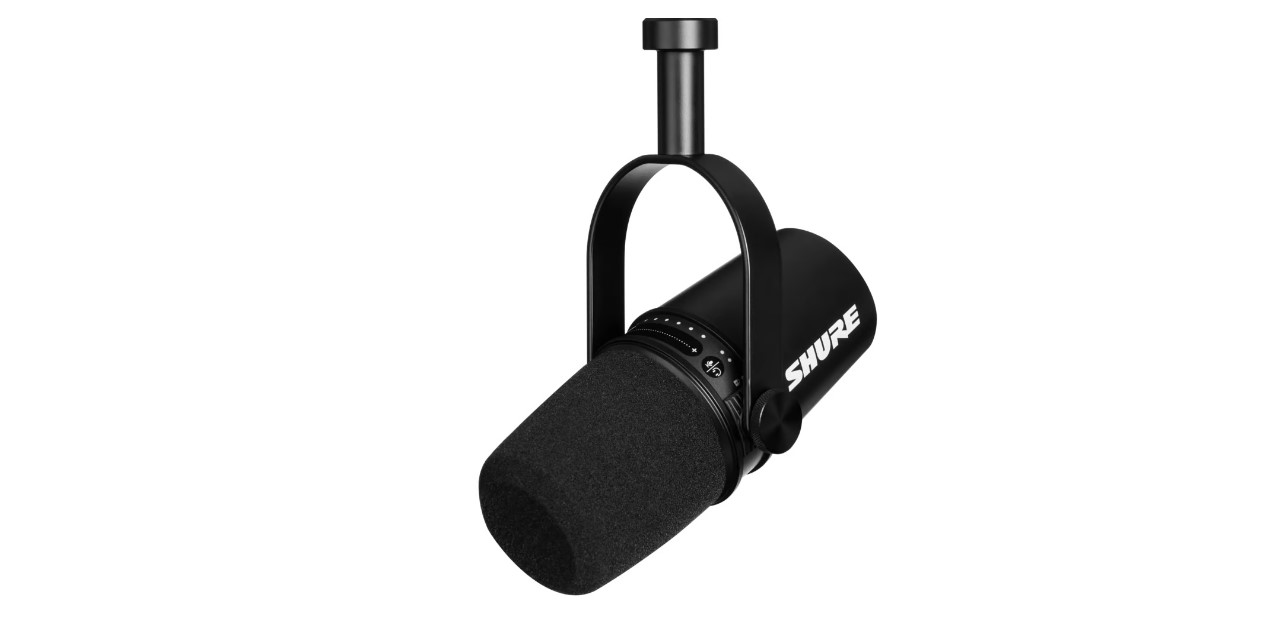
The MV7 is a dynamic microphone with both USB and XLR outputs for use with computers and professional interfaces. Image Source.
The Shure MV7’s design is a blend of modernity and functionality. Inspired by the renowned SM7B, the MV7 incorporates both metal and high-quality plastic in its construction. This combination results in a microphone that is not only lightweight but also robust enough to withstand regular use.
One of the standout features of the MV7 is its touch panel interface, which allows for easy control of settings such as gain, headphone volume, and monitor mix. This feature adds a level of convenience and modernity, making the MV7 a user-friendly option for podcasters of all skill levels.
Comparison with Rode PodMic in Terms of Durability
When comparing the durability of the Shure MV7 with the Rode PodMic, it’s important to consider the different materials used in their construction. The PodMic’s all-metal build gives it an edge in terms of ruggedness. However, the MV7’s combination of metal and plastic does not compromise its durability. It’s designed to be resilient and long-lasting, even with its lighter build.
The MV7’s design, along with its headphone output, also includes features like a built-in pop filter and an internal shock mount, which contribute to its durability by protecting the microphone from plosive sounds and physical vibrations.
Portability and Ease of Setup
The Shure MV7 shines in terms of portability and ease of setup. Its lighter weight and smaller size compared to the Rode PodMic make it a more practical option for podcasters who need to record in different locations. The dual USB/XLR connectivity is a significant advantage, allowing for easy integration with a variety of recording setups, from simple laptop connections to more complex studio interfaces.
This flexibility makes the MV7 an excellent choice for podcasters who require a microphone that can adapt to different recording scenarios without compromising on audio quality.
Sound Quality And Performance
In podcasting, the sound quality and performance of a microphone are pivotal. They affect not only the clarity and professionalism of the audio but also the listener’s experience. The Rode PodMic and Shure MV7 are both renowned for their exceptional audio capabilities, but they offer distinct sound characteristics and performance features that cater to different podcasting needs.
Rode PodMic
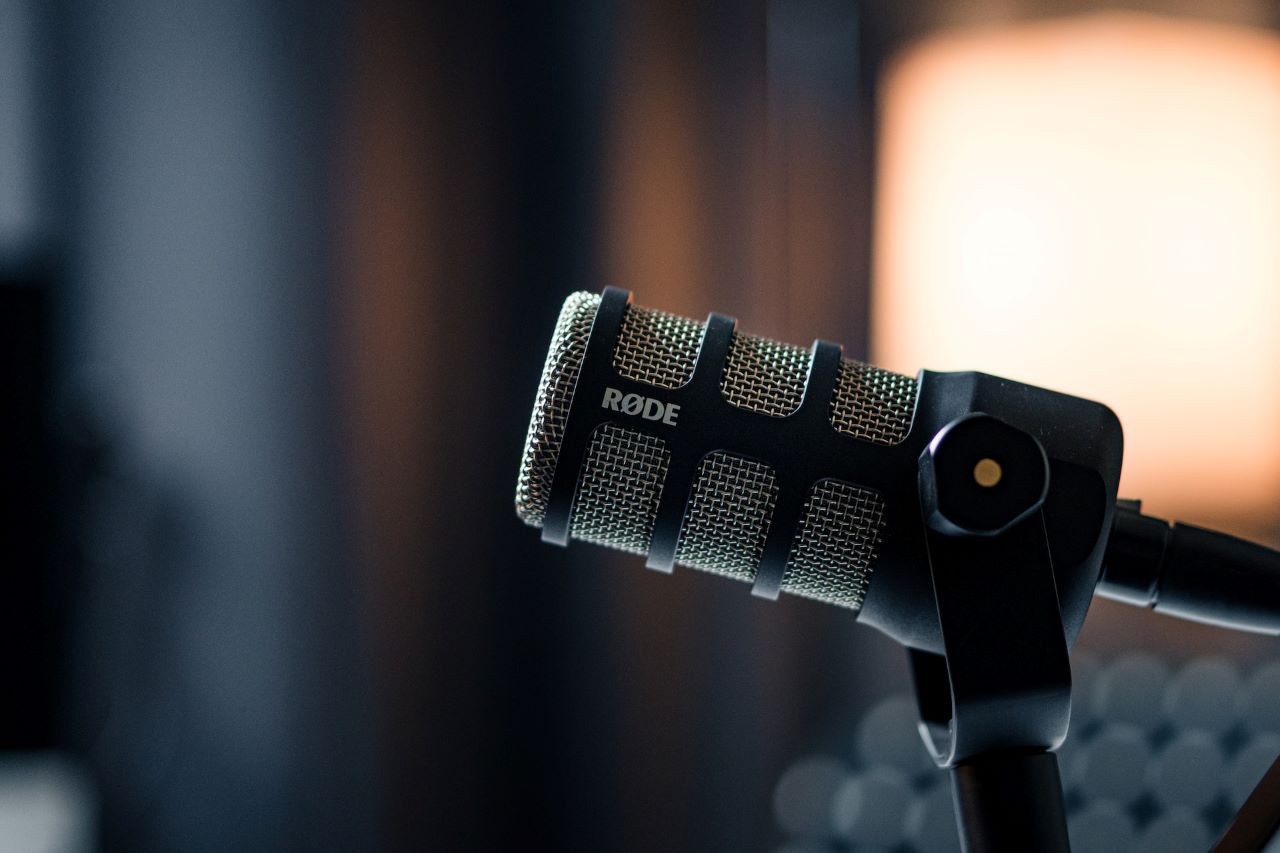
Photo by dlxmedia.hu on Unsplash
The Rode PodMic is a dynamic microphone designed specifically for spoken word applications, making it an ideal choice for podcasters and broadcasters. It is known for its rich, warm sound profile. It excels in delivering clear, detailed vocal recordings, capturing the nuances of the speaker’s voice.
This clarity is partly due to its tailored frequency response, which emphasizes the frequencies most common in speech. This emphasis ensures that the spoken word is front and center, with less background noise and minimal interference from unwanted frequencies.
One of the strengths of the Rode PodMic is its performance consistency across different recording environments. Its cardioid pickup pattern is effective in isolating the speaker’s voice from background noise, making it suitable for use in less-than-ideal acoustic environments. This feature is particularly beneficial for podcasters who may not have access to a professional studio setup.
The PodMic’s robust build and internal pop filter play a crucial role in reducing handling noise and plosives. These features ensure that the microphone captures a clean, uninterrupted audio stream, which is crucial for maintaining the professionalism of a podcast.
Shure MV7
One of the standout features of the MV7 is its ability to customize the sound profile through the ShurePlus™ MOTIV app. This app allows users to adjust settings like EQ, compression, and limiter, providing control over the audio output. This level of customization is particularly useful for podcasters who want to tailor their sound to specific content or personal preferences.
The MV7 is equipped with Voice Isolation Technology, which ensures that the microphone focuses on the speaker’s voice, minimizing background noise. This technology, combined with the MV7’s unique pickup pattern, results in a clean, professional-quality sound, even in less-than-ideal recording environments.
The MV7’s dual USB/XLR output and touch panel controls make it a user-friendly option for both novice and experienced podcasters. The USB connectivity allows for easy plug-and-play setup with computers like other famous USB microphones, while the XLR connection caters to more professional recording setups. This flexibility, along with the microphone’s intuitive controls, ensures that podcasters can achieve high-quality sound regardless of their technical expertise or recording environment.
Connectivity And Compatibility
For podcasters, the ease of connecting a microphone to various devices and its compatibility with different software and recording setups are crucial factors. The Rode PodMic and Shure MV7 offer distinct connectivity options and compatibility features, catering to a range of podcasting needs and technical setups.
Rode PodMic
The Rode PodMic features an XLR connection, which is the industry standard for professional audio equipment. This type of connection is known for its ability to deliver high-quality, balanced audio signals, making it a preferred choice for professional podcasting and broadcasting environments.
The XLR connectivity requires an audio interface or mixer to convert the analog signal into a digital format for recording on a computer. This setup, while slightly more complex than a USB plug-and-play connection, offers greater control over the audio quality and levels.
Compatibility with Different Devices and Software
The PodMic’s XLR connection makes it compatible with a wide range of audio interfaces, mixers, and professional recording equipment. This versatility ensures that the microphone can be integrated into various podcasting setups, from home studios to professional broadcasting environments.
Additionally, this XLR mic is compatible with most recording software, unlike many USB mics, including popular DAWs (Digital Audio Workstations) used by podcasters, such as Audacity, Adobe Audition, and Pro Tools.
Ease of Integration with Existing Setups
Integrating the Rode PodMic into an existing podcasting setup is relatively straightforward, provided there is an audio interface or mixer with XLR inputs. The microphone’s robust design and professional-grade audio quality make it a suitable addition to both amateur and professional studios.
Its standard XLR connection ensures that it can easily replace or complement other professional microphones in a multi-mic setup.
Shure MV7
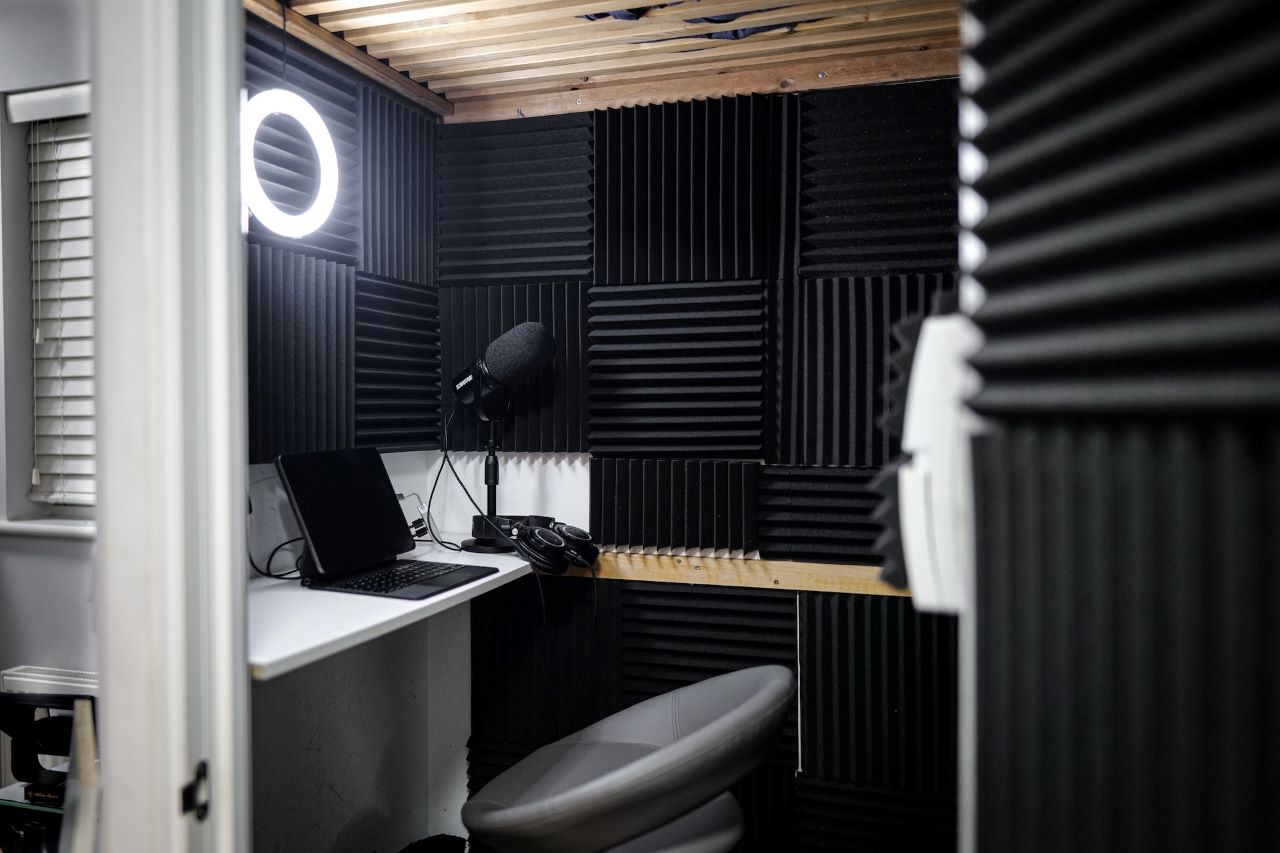
Photo by James McKinven on Unsplash
One of the key features of the Shure MV7 is its dual USB and XLR connectivity. This dual-output design allows podcasters to choose between a simple USB plug-and-play connection for quick and easy recording or a professional XLR connection for use with audio interfaces and mixers.
The USB connection is ideal for podcasters who prefer a straightforward setup without the need for additional equipment. In contrast, the XLR connection caters to those who require higher audio quality and more control over their recording setup.
Software Compatibility and Additional Features
The MV7 is compatible with a wide range of recording software, both on computers and mobile devices. Its USB connectivity ensures seamless integration with software like GarageBand, Audacity, and Adobe Audition. Additionally, the ShurePlus™ MOTIV app offers enhanced control over the microphone’s settings when connected via USB, allowing users to adjust gain, monitor mix, EQ, and more.
Mobile App Integration and Usability
The Shure MV7’s integration with the ShurePlus™ MOTIV app is a significant advantage for podcasters who prefer to record on mobile devices or desire additional control over their microphone settings. The app provides a user-friendly interface for adjusting microphone settings in real-time, making it easier to achieve the desired sound quality. This feature is particularly useful for podcasters who are on the go or do not have access to a full studio setup.
Features And Functionalities
When selecting a microphone for podcasting, understanding its features and functionalities is crucial. These aspects not only determine the microphone’s performance but also its versatility and ease of use. The Rode PodMic and Shure MV7 each bring unique features and functionalities to the table, catering to different podcasting styles and technical needs.
Rode PodMic
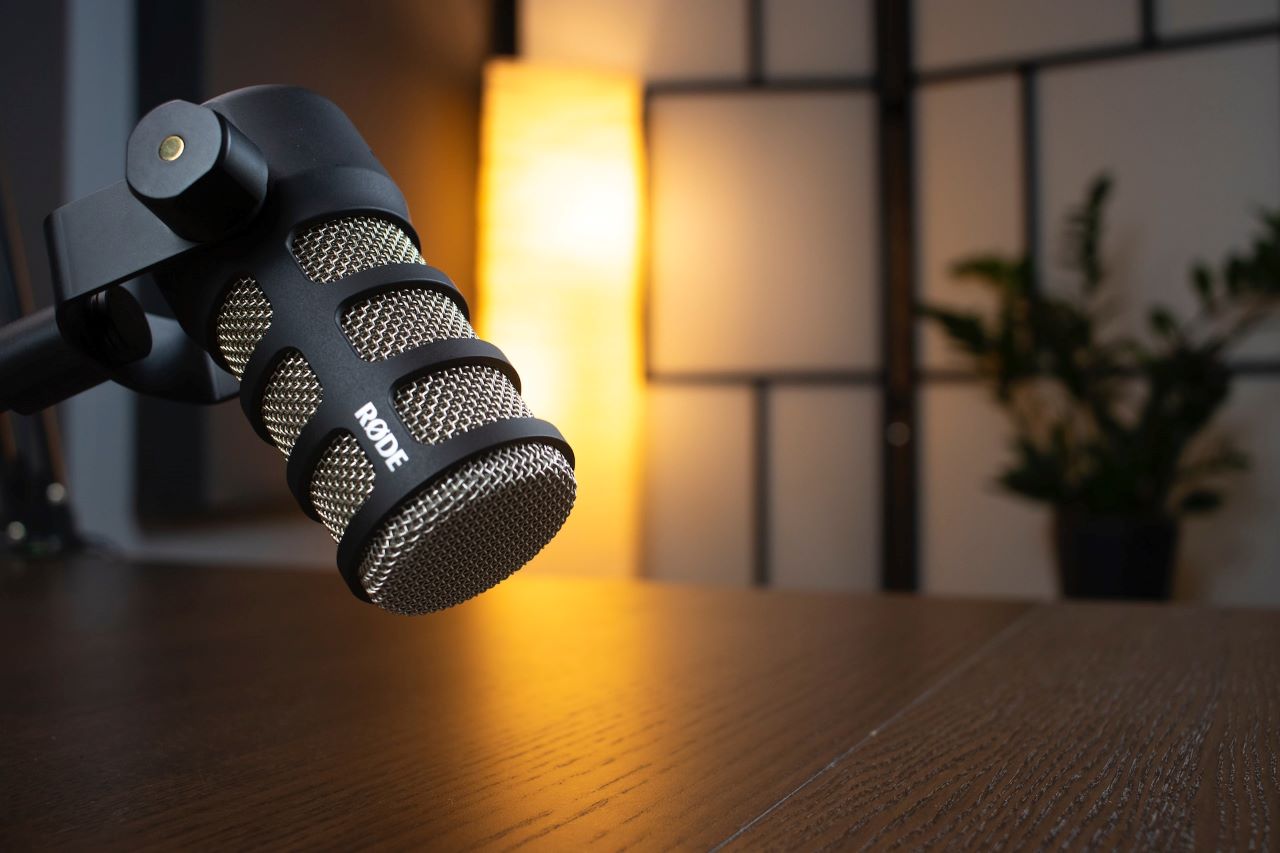
Photo by dlxmedia.hu on Unsplash
The Rode PodMic’s standout feature is its tailored frequency response, optimized for speech. This ensures that vocals are captured clearly and crisply, with an emphasis on the frequencies most common in human speech.
The microphone’s internal pop filter is another key feature, designed to reduce plosives and breath noise, enhancing the clarity of the audio. Additionally, the PodMic’s all-metal construction and ceramic coating not only contribute to its durability but also provide a professional, sleek appearance.
- Adjustable Settings and User Interface: The Rode PodMic keeps things simple with minimal adjustable settings, focusing on delivering excellent sound quality without the need for extensive tweaking. The lack of onboard controls means that adjustments to gain and EQ must be made through an external mixer or audio interface. This simplicity makes the PodMic an ideal choice for podcasters who prefer a ‘plug-and-play’ approach or those who are new to audio production.
- Accessories and Additional Requirements: To get the most out of the PodMic, certain accessories and additional equipment are recommended. A boom arm or microphone stand is essential for proper positioning, and an external pop shield can be added for extra plosive protection. Since the PodMic uses an XLR connection, an audio interface or mixer is required to connect it to a computer for recording.
Shure MV7
The MV7’s most notable technological innovation is its dual XLR and USB connections, allowing for versatile recording setups. The microphone also features Voice Isolation Technology, ensuring that the speaker’s voice is captured clearly, even in noisy environments. The touch panel interface for on-mic controls is another advanced feature, providing easy access to settings like gain, headphone volume, and mute.
- Customization Options via Software: Through the ShurePlus™ MOTIV app, this USB microphone offers extensive customization options. Users can adjust settings such as EQ, compression, and limiter, tailoring the microphone’s sound to their specific needs. This level of control is particularly beneficial for podcasters who want to fine-tune their audio in real-time or experiment with different sound profiles.
- Bundled Software and Accessories: The MV7 comes with the ShurePlus™ MOTIV app, enhancing its functionality when used with USB connectivity. In terms of accessories, the MV7 is compatible with a variety of mounts and stands, and its design allows for easy integration with existing podcasting setups. Optional accessories like windshields and shock mounts can be added for improved audio quality and reduced handling noise.
What Are The Similarities Between These Microphones?
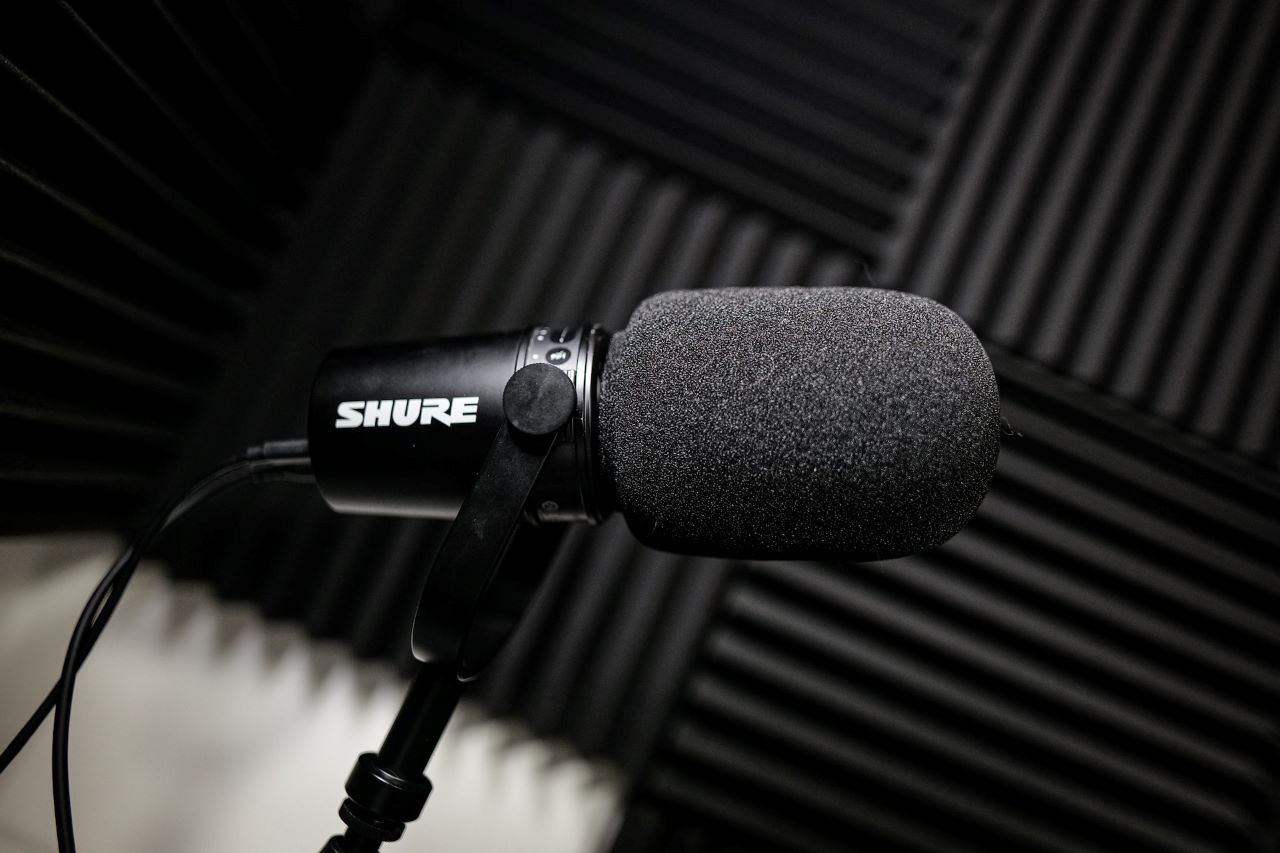
Photo by James McKinven on Unsplash
While the Rode PodMic and Shure MV7 have distinct features, they also share several similarities that make them both appealing choices for podcasters. These commonalities are important to consider when evaluating which microphone best suits your needs.
- Dynamic Microphone Design: Both the Rode PodMic and Shure MV7 are dynamic microphones, which means they are well-suited for capturing speech and are generally more robust in handling high sound pressure levels. This makes them ideal for podcasting, broadcasting, and vocal recording.
- Cardioid Pickup Pattern: Each microphone features a cardioid pickup pattern, which is designed to capture sound primarily from the front of the microphone while minimizing noise from the sides and rear. This pattern is beneficial for isolating the speaker’s voice in a podcasting environment. The cardioid polar pattern is especially effective in studio settings where focusing on the speaker’s voice is crucial.
- Optimized for Spoken Word: The Rode PodMic and Shure MV7 are both optimized for spoken word applications. They are engineered to capture clear, articulate, and natural-sounding speech, making them suitable for podcasting, voice-overs, and broadcasting.
- Professional-Level Audio Quality: Both microphones are recognized for their professional-level audio quality. They are capable of producing clear, crisp, and rich sound, which is essential for creating high-quality podcast content.
Related: Shure SM7B vs Rode PodMic
What Are The Main Differences?
Despite their similarities, the Rode PodMic and Shure MV7 have several key differences that set them apart. These differences can significantly influence a podcaster’s choice depending on their specific needs and recording environment.
- Connectivity Options: The most notable difference is in connectivity. The Rode PodMic offers only an XLR connection, requiring an audio interface or mixer for use. In contrast, the Shure MV7 features dual USB and XLR connectivity, providing greater versatility for different recording setups.
- Onboard Controls and Customization: The Shure MV7 includes onboard touch panel controls and extensive customization options through the ShurePlus™ MOTIV app, allowing users to adjust settings like EQ, compression, and limiter. The Rode PodMic, on the other hand, lacks these onboard controls and software-based customization features.
- Design and Build: While both microphones are robust, the Rode PodMic features an all-metal construction, giving it a more substantial and durable feel. The Shure MV7 combines metal and high-quality plastic, making it lighter and more suited for portable setups.
- Software Integration: The Shure MV7’s integration with the ShurePlus™ MOTIV app adds significant value, especially for users who record on mobile devices or prefer additional control over their microphone settings. The Rode PodMic does not offer similar software integration.
- Price Point: There is a noticeable difference in the price points of these two microphones, with the Shure MV7 generally being more expensive than the Rode PodMic. This price difference reflects the additional features and technological advancements of the MV7.
- Ease of Setup: The Shure MV7’s USB connectivity offers a simpler setup for those who prefer a plug-and-play approach, which is especially beneficial for beginners or those without complex recording equipment. The Rode PodMic’s XLR setup, while offering high-quality audio, requires more knowledge and additional equipment.
- Sound Customization: The MV7’s ability to customize the sound profile via software provides users with more control over their audio output, which can be particularly useful for achieving specific sound qualities or adapting to various recording conditions. The PodMic, while delivering excellent sound quality, does not offer this level of sound customization.
These similarities and differences highlight the unique characteristics of the Rode PodMic and Shure MV7, providing valuable insights for podcasters as they choose the microphone that best fits their recording style, technical requirements, and budget.
Final Verdict
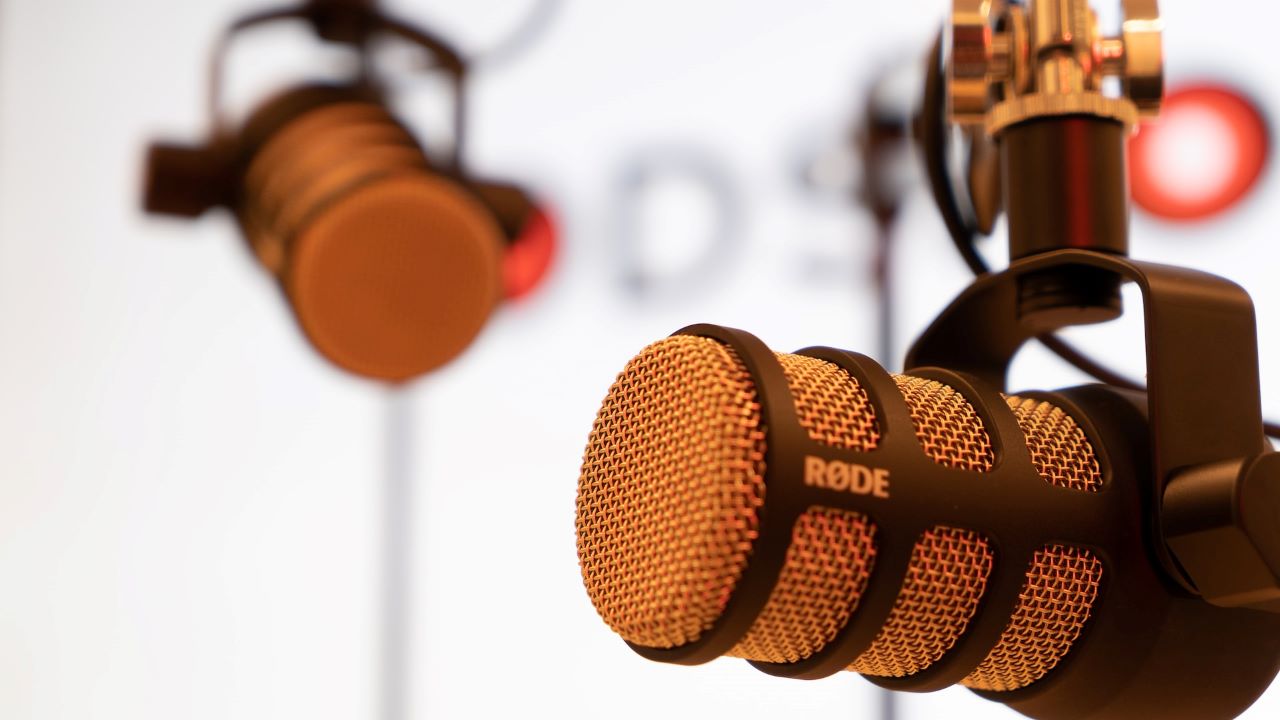
Photo by Harold Jonker on Unsplash
In conclusion, the Rode PodMic and Shure MV7 are both exceptional microphones, each offering unique features and capabilities that cater to the diverse needs of podcasters. The Rode PodMic stands out for its robust all-metal construction, tailored frequency response for spoken word, and its straightforward, no-frills approach to podcasting. It’s a microphone that promises durability and quality audio capture, particularly suited for those who have access to an audio interface or mixer and prefer a traditional XLR setup.
On the other hand, the Shure MV7 brings a blend of modern technology and versatility to the table. Its dual USB and XLR connections, onboard controls, and software integration through the ShurePlus™ MOTIV app offer a high degree of flexibility and customization. This makes it an ideal choice for podcasters who value ease of use, portability, and the ability to fine-tune their audio settings.
While they share some similarities, such as their dynamic microphone design, cardioid pickup pattern, and optimization for spoken word, their differences in connectivity, customization, and design cater to different podcasting styles and technical preferences. The choice between the Rode PodMic and Shure MV7 ultimately depends on the individual podcaster’s requirements, recording environment, and budget.
Both microphones are capable of delivering professional-level audio quality, but they do so in their own unique ways. Whether you prioritize durability and a classic approach with the Rode PodMic or flexibility and technological innovation with the Shure MV7, both mics offer compelling features that can enhance the quality and professionalism of your podcast.